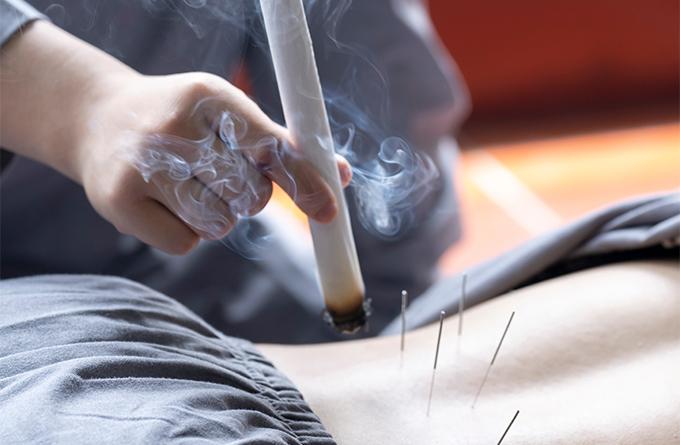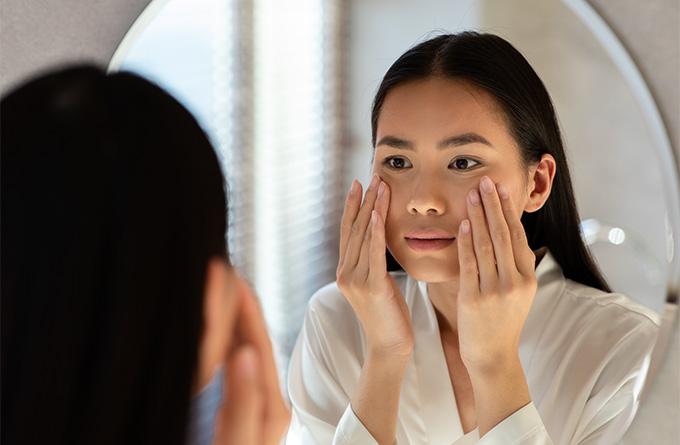Bell’s Palsy is a disorder that causes a sudden weakness or paralysis in the face. While it is a challenging condition to experience and the recovery process may not be all that smooth sailing, there are ways to enhance healing and maintain long-term facial health post-recovery. Whether you’re still struggling with the condition or looking for ways to prevent its recurrence, we share some holistic approaches, including physiotherapy and traditional chinese medicine (TCM), that you can leverage to enhance your well-being. Keep reading to learn more.
1. Acupuncture and Moxibustion

Looking for a progressive care approach to your condition? Acupuncture and moxibustion are TCM techniques used for various health conditions, including promoting facial health after recovery from Bell’s palsy.
According to TCM, Bell’s Palsy is attributed to the invasion of an external Wind pathogen affecting the ear and subsequently obstructing the associated meridian or collaterals. The onset of this condition is frequently linked to a Qi deficiency in the meridians, enabling the intrusion of wind pathogens and leading to Qi and Blood blockage. Treatment strategies vary based on the stage of the condition, with early stages targeting the elimination of external wind, while later stages focus on invigorating the blood to open channels and rectifying facial deviation.
What acupuncture and moxibustion do is encourage the circulation of Qi and Blood through the use of thin needles and the burning of dried mugwort respectively. Both methods restore balance, promote healing, and contribute to nerve regeneration, facial muscle recovery, and reduced muscle stiffness to treat facial paralysis.
Learn More: Acupuncture for Bell’s Palsy
2. Herbal Remedies
Herbs have always been the go-to remedy for various medical conditions. In Bell’s Palsy treatment, they are chosen based on their ability to improve Blood and Qi circulation, reduce inflammation, and enhance nerve function. Here’s a list of herbs and what they do to your body:
- Qian Zheng San: A classical herbal formula that has been used for Bell’s Palsy or symptoms caused by Wind-phlegm obstructing the channels of the head and face that leads to facial deviation.
- Fu Zi: Warming herb to circulate Qi in the head and face, expel Wind, and stop spasm in the muscles.
- Jiang Can (Silkworm) and Quan Xie (Scorpion): Extinguish Wind and stop spasm and convulsions in the facial muscles.
- Tao Ren (Peach Kernel) and Hong Hua (Saffron): Invigorate blood circulation and open up channels.
- Huang Qi: Tonifies Qi to help blood move smoothly.
3. Physical Therapy and Facial Exercises

Certain physiotherapy exercises that target specific facial muscles can help strengthen them and improve control and coordination. This may include using your fingers to gently lift your eyebrows, or slowly trying to move every part of your face. It is usually recommended that you perform these daily to increase flexibility and range of motion, reduce stiffness, and enhance muscle function.
Apart from movement, physical therapy may also include massages that stimulate blood circulation. You can rub your cheeks downwards in circular motions till you reach the corner of your mouth and massage from your eyebrows to your hairline to relieve muscle tension and promote relaxation.
TCM also incorporates facial exercises for the treatment of Bell’s Palsy. These work to enhance the flow of energy (Qi) and Blood in the affected areas, balancing the body’s internal systems to resolve problems.
4. Protect Your Eyes
When recovering from Bell’s Palsy, it’s important to protect your eyes to prevent complications such as corneal damage, infections, and discomfort, as well as support overall facial rehabilitation efforts.
Bell’s Palsy can affect facial muscles including those responsible for closing the eyelids. If you’re unable to fully close your eyes, the exposure to external elements may result in dryness, irritation and increase your risk of infection or damage. In this case, what you can do is regularly apply eye drops and wear protective eyewear.
5. Shield Your Face from Extreme Weather Conditions
Your facial muscles can be affected when it’s exposed to extreme weather conditions like cold and windy environments. Not only does it cause dryness and irritation, it also places additional stress on your face, which can hinder your recovery process. If you’re trying to heal from Bell’s Palsy, it’s important to protect your face from these elements and maintain skin health. Here are some tips:
- Wear a hat or use ample sunscreen to protect your face from harmful UV rays.
- Reduce stress on facial muscles by shielding your face from strong winds.
- Cover up your face with a mask or scarf to protect it from external elements.
Want to expedite your recovery or foster long-term well-being for a healthier and more vibrant future? Thomson Chinese Medicine, a TCM clinic in Singapore, offers a sustainable care approach and holistic Bell’s Palsy treatment options to help you find relief. Schedule your appointment with us today.
Physician Seah Ai Wei
Traditional Chinese Medicine
Thomson Chinese Medicine (TCM Novena Specialist Centre)
English, Mandarin
Alliance MediNet

